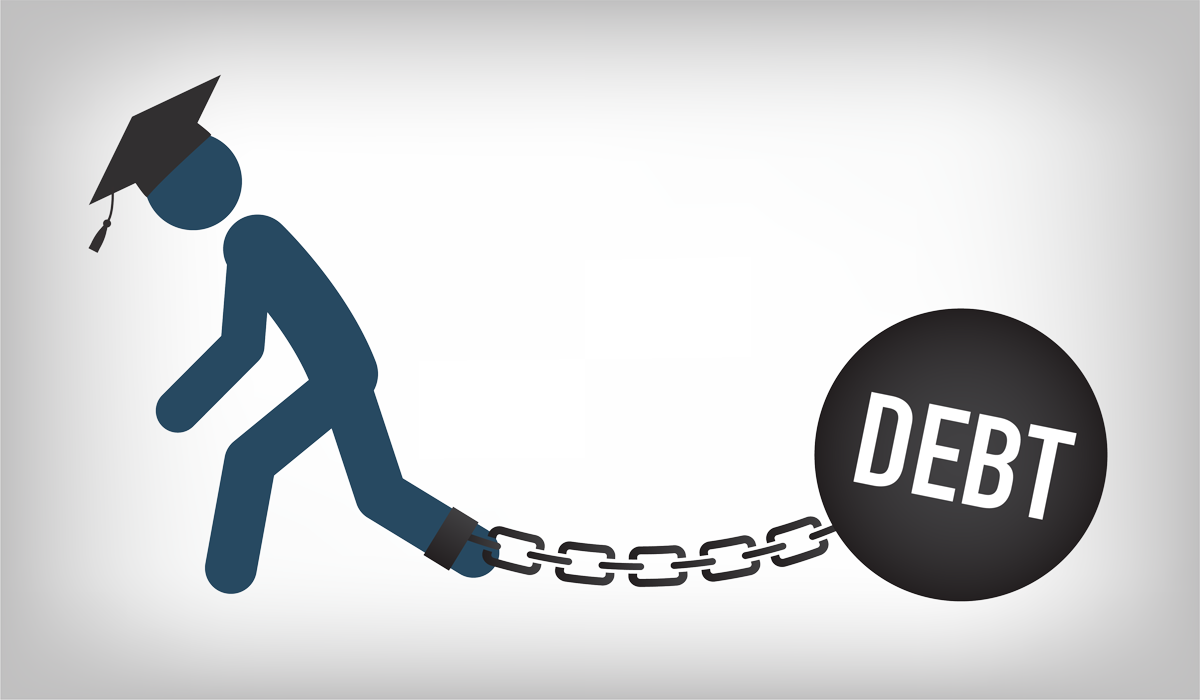Last Updated on June 23, 2022 by Laura Turner
People sometimes assume that student loans are easy to pay back on a doctor’s salary, but there are many factors at play. The combination of expensive undergraduate loans, medical school loans and compound interest can overwhelm even a highly paid professional. What’s more, not every doctor is handsomely paid. A physician specializing in medical genetics, for example, earns about $100,000 a year. While a great salary, this may not enough to comfortably pay back hundreds of thousands of dollars in student loans.
Finaid calculates that a family of four would need to earn between $168,590 and $228,462 to pay a $200,000 loan off in ten years at 6.6% interest. Even with a thirty-year loan, a family of four would need to earn between $104,105 and $142,481 annually. Finaid’s recommended salary to comfortably pay off this level of debt is $293,000 for a ten-year loan and $164,000 for a thirty-year loan. Take a whirl on their calculator to see how your numbers pan out.
Public Service Loan Forgiveness Basics
Public Service Loan Forgiveness (PSLF) has been proposed as an answer. The program offers loan forgiveness to anyone who makes 120 qualifying payments on Direct student loans (including loans that have been consolidated to Direct student loans) while working at a governmental or public-good-providing non-profit organization. A Direct student loan is one made directly by the federal government. A qualifying payment includes one that is made on the correct type of loan repayment scheme while working at an approved organization. That’s only ten years of payments and many academic institutions and hospitals qualify. After these payments have been made, the remaining balance is forgiven. Sounds great, right?
But before you pack your bags for the most expensive medical education loans can afford, read the fine print. According to a recent report on the state of the program, 109,932 unique applications have been submitted. Only 1,561 have been approved. What’s going on?
PSLF: What Went Wrong?
Forbes writer Robert Farrington has a theory: there weren’t many qualifying programs – which allow for payments to count towards PSLF – until recently. The popular Income Based Repayment (IBR) Plan does qualify but didn’t come into play until 2009. Until then borrowers needed to be enrolled in the Income Contingent Repayment plan, which is complicated and can result in higher payments. Farrington expects to see an increase in PSLF approvals any day now, but it’s still surprising there aren’t more now.
It has been eighteen years since Public Service Loan Forgiveness was enacted. Eleven since we had IBR. In all that time there must have been more than 1,500 people who thought about it, enrolled in a qualifying program and made 120 payments. Somewhere along the line, people thought they qualified, applied and then saw their applications denied.
A 2018 NPR article outlines how this might happen. Often, the devil is in the details. People thought their loans were eligible when they needed to consolidate to Direct loans, paid years under a payment play that didn’t qualify, or made mistakes in their paperwork. According to the latest data, most of the applicants who had made enough payments either didn’t have Direct loans (15%) or made paperwork mistakes (24%).
It is crucial to note that loan providers don’t benefit by enrolling borrowers in PSLF. They don’t make money by forgiving loans. Making sure you’re on track is the borrower’s job, and it isn’t as simple as it should be.
Preparing to Apply for PSLF
If you’re hoping to use the program here are some things you should do:
- Only Direct student loans are eligible for PSLF. If you have other federal loans and haven’t started making qualifying payments yet, consolidate under a Direct loan product.
- Be vigilant about your payment plan. Eligible plans include IBR, Income-Contingent Repayment (ICR), Pay As You Earn (PAYE), and Revised Pay As You Earn (RPAYE). These plans require a yearly reapplication and there are horror stories about loan providers switching borrower’s plans by default. Make a habit of going through your loan statements and plan each year. Make sure the plan your online portal names is correct. If you can’t find it listed on your portal, ask for documentation from your provider.
- When you begin to work at a qualifying institution (residency counts if you’re training at a non-profit institution) fill out and submit a PSLF Employment Certification Form. Then track your pre-approved qualifying payments online.
PROTIP: If you already have student loans, don’t accept forbearance while you’re in medical school. Call your provider and asked to be placed on an IBR, PAYE or REPAYE plan. If PSLF doesn’t work out, you will have already made four years of zero-dollar payments on one of these plans. Another four years of payments during residency and you’re at eight. Twenty years of payment on any of these plans allows for debt forgiveness. (Twenty-five years on IBR loans taken out before 2014.)
Should You Plan on PSLF?
Though Public Service Loan Forgiveness is attainable, it is never a good idea to rely on debt forgiveness. Any number of things can happen in the next ten to fifteen years to change the current system. There have already been repeated moves to defund or revoke PSLF.
Moreover, you will change in the next ten years. You may dream of a qualifying academic job now but find your dream job is corporate when the time comes. Be able to say yes to the job you really want when you finally finish training. Put your ducks in a row for PSLF, but don’t take out so much debt that the program becomes a life raft.



Just prepare yourself to be eligible in this loan and you should be able to make 120 qualifying payments on Direct student loans while working at a governmental or public-good-providing non-profit organization. Quiet not easy at all, it takes some efforts!